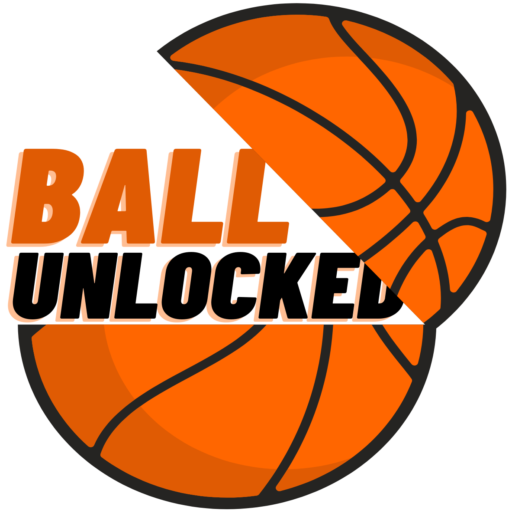The most common type of foul is a shooting foul.
But what is it exactly?
A shooting foul occurs when a defender initiates illegal contact with a player while in the act of shooting. This can include tapping, grabbing, pushing, or even not giving them a space to land.
But what happens after a shooting foul? In this post, we’ll dive into this foul and give you effective tips to avoid them.
What is a Shooting Foul in Basketball?
Simply put, a shooting foul occurs when a defender fouls a player while shooting.
While contact with the opposing player is generally not a foul, contact, especially with illegal parts, is a foul.

An example of a shooting foul is when a player grabs the hands or body of a player while he’s going for a layup.
Another one is when a player shoots a three and the defensive player doesn’t give him space to land.
Foul is committed because there’s illegal contact which impedes the natural ability of the player to shoot.
What is the Penalty for a Shooting Foul?
The penalty for a shooting foul is a free throw. The number of free throws to be given depends on the type of shot attempted while fouled.
If the player is fouled while attempting a layup or a mid-range shot, he’s given two free throws.
But if a player’s fouled while shooting a three, he’s awarded three free throws.
Consequently, if the player is fouled while shooting and still makes the shot, he’s given one free throw on top of the basket. These are called three-point and four-point plays.
If the foul is hard enough, then it can be called a flagrant foul which can even lead to ejection. But the normal penalty for a flagrant foul is a free throw and the possession of the fouled team.
What is the difference between a shooting foul and non-shooting foul?
The difference between a shooting foul and a non-shooting foul is whether the foul occurred in the act of shooting or not.
A shooting foul is always called when there’s a foul while a player attempts to shoot. It doesn’t matter where the player attempted to shoot, a free throw is always rewarded.
But if the player has been fouled in any other way other than when shooting, it’s called a non-shooting foul. There are many other types of fouls out there, as a shooting foul is only a type of personal foul.
Shooting foul hand signal
The common hand signal for a personal foul where a shooting foul belongs is a referee making a fist and raising it up.
He may then point with his other hand downwards or where the foul has occurred.
5 Tips to Avoid Shooting Fouls

Shooting fouls are among the most common fouls in any basketball game. The number one priority on defense is to stop a player from scoring which is why this foul always happens.
But that doesn’t mean that you must foul the shooter every time. A good defender can stop the shooter with the right techniques.
Here are the most effective tips to defend properly while avoiding a foul.
Tip #1: Be mindful of your hands
The most common example of a shooting foul is when a player taps the shooter’s hands or body.
Since a player’s hands touch the ball, the defensive player naturally wants to swipe or block it.
To avoid this mistake, try not to overextend your hand. You can block the shooter’s line of sight by raising your hand but don’t overcommit.
Also, be mindful of your hand placement when guarding someone. You don’t want to be overly touchy, but you also don’t want to be so lax.
Tip #2: The right amount of contact
Basketball is a contact sport, but it doesn’t mean that you can force contact every time. When defending, you can only use your own body to not get pushed around when a player is backing you down.
Don’t lean into the shooter too much to avoid a shooting foul. Make sure there’s still a space for the shooter to naturally move otherwise you can commit a shooting or a blocking foul.
The best thing to do is to know when your opponent tries to push pass through you. This is when you’ll initiate contact using your chest and try to block the way with your hands.
Tip #3: Anticipate
The best defenders can anticipate most of a player’s movements. By reading subtle body movements, you can defend well.
But it can also backfire when the opponent is smart. So, anticipate but leave some room for you to adjust.
The key is to anticipate at least two to three moves ahead and prepare for all of them.
Tip #4: Don’t overreact
Sometimes, the best defense is when you don’t overreact. Amateurs make the mistake of defending by being aggressive.
While you do need to be a bit aggressive when defending, this can often lead to fouls. You don’t want to overreact to every single movement since there’s also a risk that it’s a fake.
Most importantly, when you believe the shooter has truly gone past you, you don’t need to commit a foul unnecessarily.
Instead, try to cut off his passing route if a help defender came.
Tip #5: Practice defending
Ultimately, the best tip we can give you is to practice defending. Committing shooting fouls is common but the more you practice, the lesser mistakes you make.
Final Words
Shooting fouls occur when there’s contact while a player is shooting.
If you’re a defender, the tips we mentioned above should be able to help you defend without committing a foul.
Read these next:
